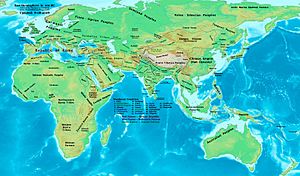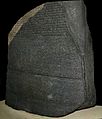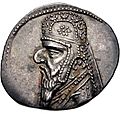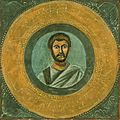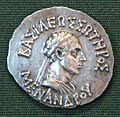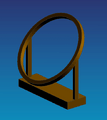2nd century BC facts for kids
| Millennium: | 1st millennium BC |
|---|---|
| Centuries: | 3rd century BC · 2nd century BC · 1st century BC |
| Decades: | 190s BC 180s BC 170s BC 160s BC 150s BC 140s BC 130s BC 120s BC 110s BC 100s BC |
| Categories: | Births – Deaths Establishments – Disestablishments |
The 2nd century BC was a 100-year period that started on January 1, 200 BC, and ended on December 31, 101 BC. This time is part of what historians call the Classical period. It was a time of big changes and powerful empires around the world.
During this century, the Roman Republic became super strong. It took over many new lands. Far away in East Asia, China also grew into a huge and powerful empire under the Han dynasty.
Contents
Rome Becomes a Superpower
After winning a big war called the Second Punic War, the Roman Republic kept growing. It wanted to control more land around the Mediterranean Sea.
Rome Conquers New Lands
Rome expanded its power by taking over nearby areas. It eventually made Greece part of its empire. Rome also took control of the coast of North Africa. This happened after they completely destroyed the city of Carthage in the Third Punic War. This war was the final fight between Rome and Carthage.
Rome Controls the Mediterranean
In the east, the Seleucid Empire had to give up some land to Rome. They did this to avoid a big war. Because of these victories, Rome became the main power around the Mediterranean Sea. They controlled most of the trade and travel in the region.
Changes in the Roman Army
By the end of this century, the Roman army changed a lot. Before, soldiers were mostly regular citizens who had to join the army for a short time. But then, a leader named Gaius Marius made big changes. These changes were called the Marian Reforms. The army became a group of professional soldiers who joined voluntarily. They were paid for their service. This made the Roman army even stronger and more loyal.
China's Golden Age: The Han Dynasty
While Rome was growing in the west, China was also having a very successful time. This was under the rule of the Han dynasty.
The Han Empire Expands
The Han Empire became very large. It stretched from Korea in the east all the way to Vietnam in the south. In the west, it reached the borders of what is now Kazakhstan. The Han rulers also tried to make friends with people called the Yuezhi in the west. They hoped the Yuezhi would help them fight against another group called the Xiongnu.
Important Inventions in China
It was also during this century that the first paper was made in China. This was a huge invention! Paper made it much easier to write and keep records. This helped the Han Empire manage its large lands and spread knowledge.
Images for kids
-
The Rosetta Stone, a special stone that helped us understand ancient Egyptian writing.
-
A silver coin from King Pushyamitra Shunga of India.
-
Cleopatra II ruled Egypt with her brothers for much of the century.
-
A painting from the tomb of Liu Wu, Prince of Chu in China.
-
Emperor Wu of Han was a very powerful Chinese emperor.
-
A coin of Mithridates II of Parthia, a ruler from Parthia.
-
Scipio Aemilianus, a famous Roman general.
-
Antiochus III the Great, another important ruler from the Seleucid Empire.
-
Gaius Marius, the Roman general who reformed the army.
-
Polybius, a Greek historian.
-
Terence, a Roman playwright.
-
A coin of Menander I, a Greek king who ruled parts of India and became a Buddhist.
-
Posidonius, a famous Greek thinker and writer.
-
Hipparchus' equatorial ring, a tool used to study stars.
See also
 In Spanish: Siglo II a. C. para niños
In Spanish: Siglo II a. C. para niños


